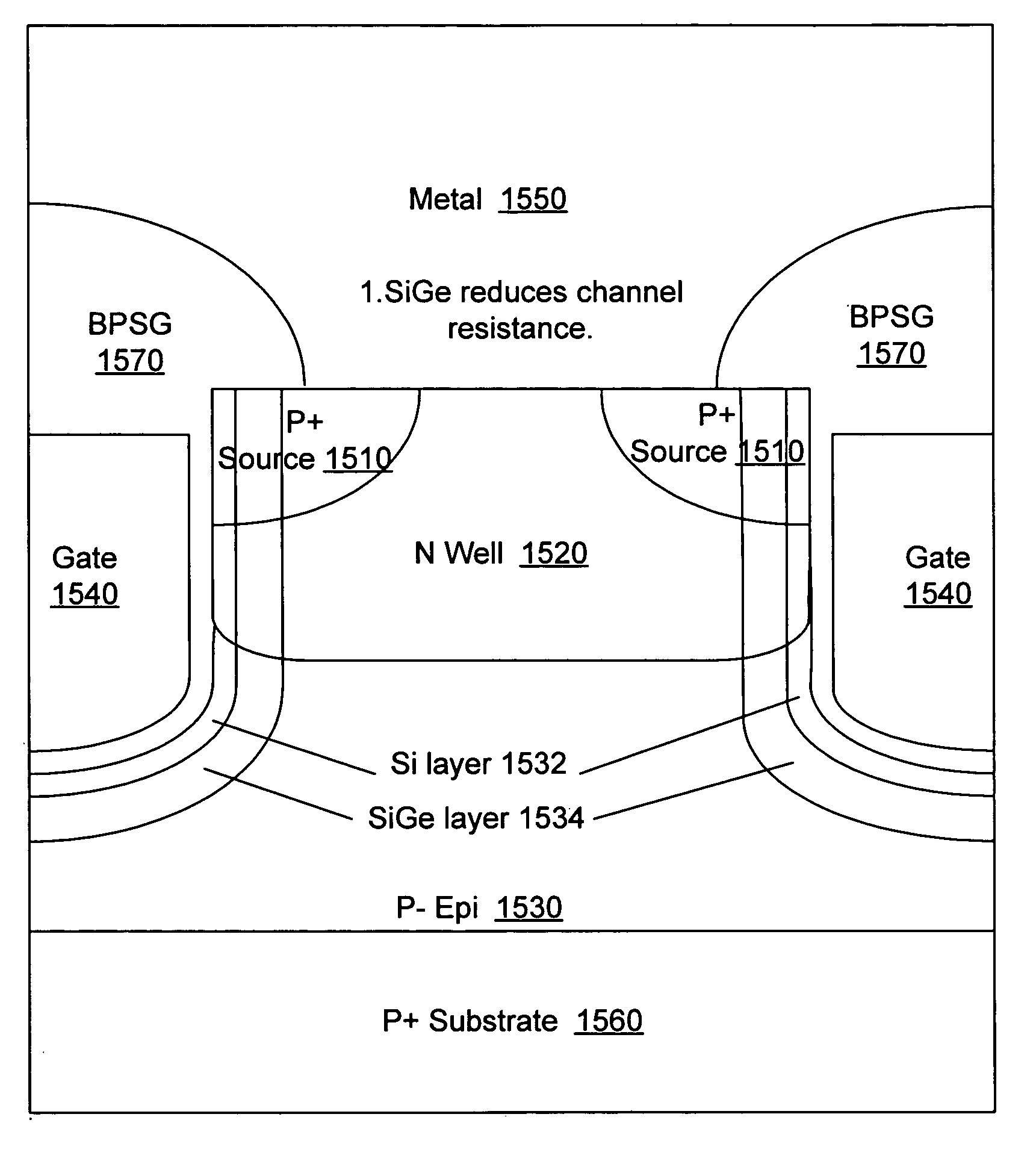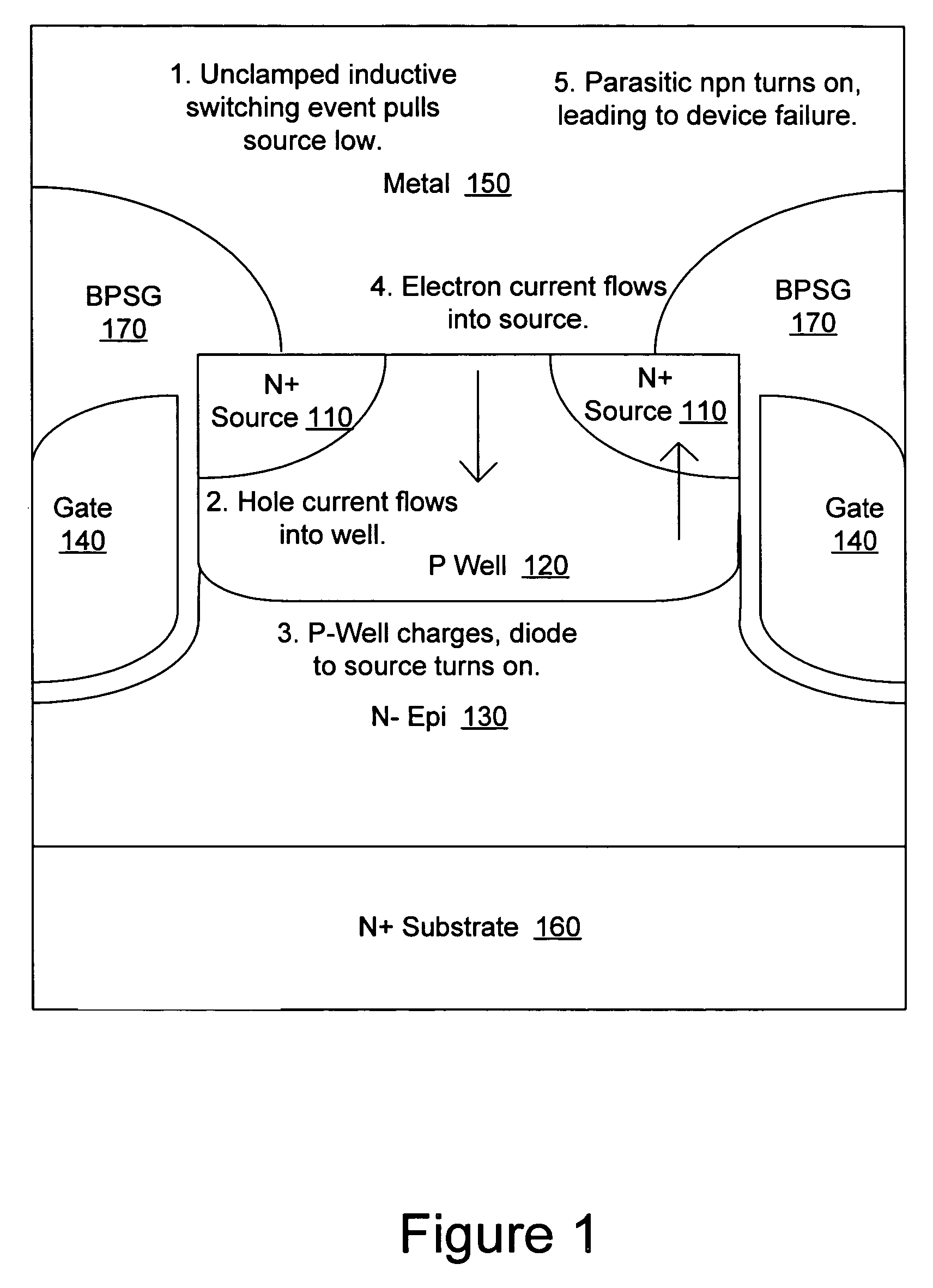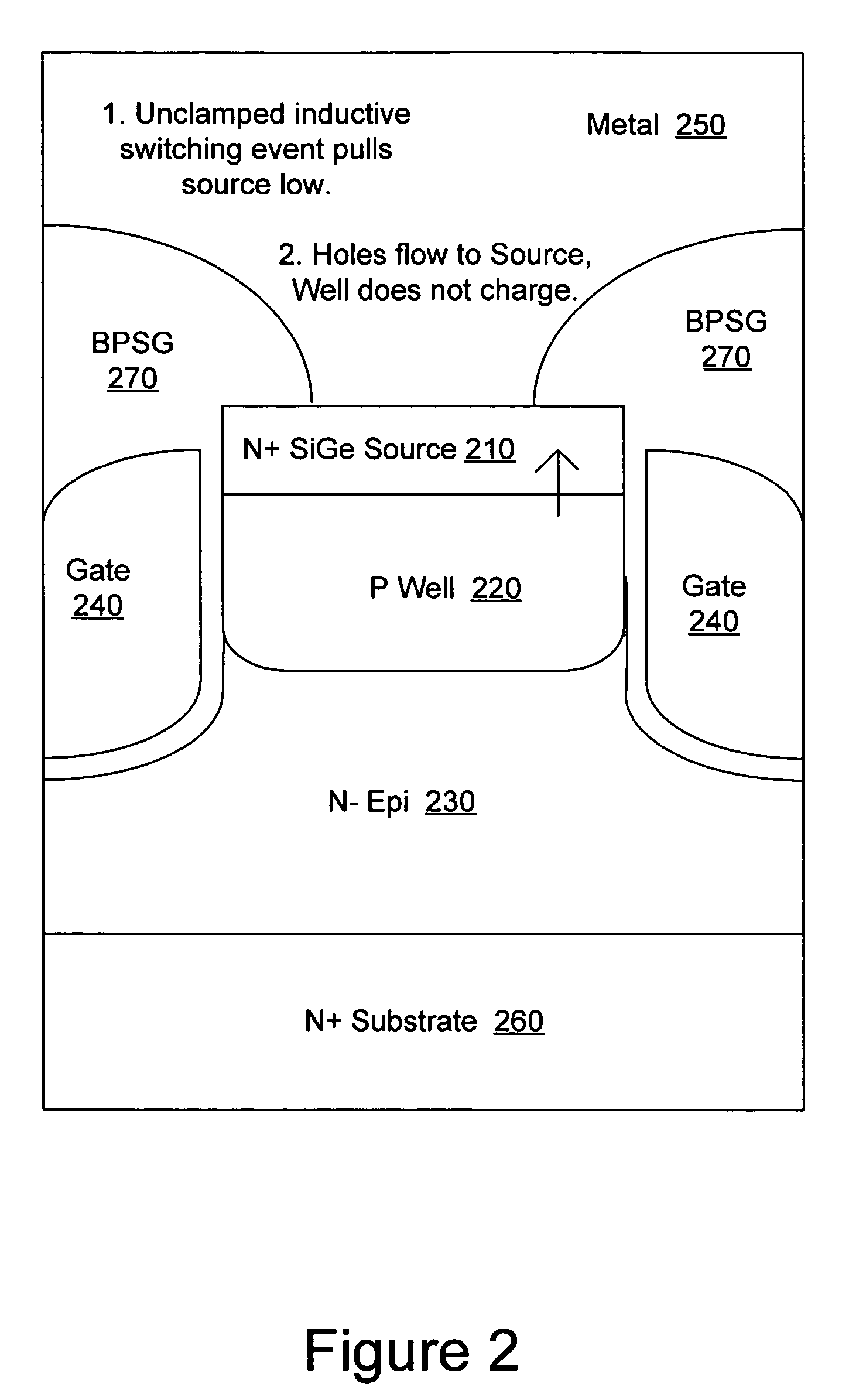Bandgap engineered MOS-gated power transistors
a technology of power transistors and mos-gated transistors, which is applied in the direction of sustainable manufacturing/processing, semiconductor devices, climate sustainability, etc., can solve the problems of large voltage transients at one or more device terminals, application can be very harsh, and the transistors are put under tremendous strain, so as to improve the immunity to transient voltages, reduce parasitic impedances, and improve the effect of immunity
- Summary
- Abstract
- Description
- Claims
- Application Information
AI Technical Summary
Benefits of technology
Problems solved by technology
Method used
Image
Examples
Embodiment Construction
[0031]FIG. 1 is a cross section of an n-channel trench-gate power MOSFET that is improved by the incorporation of an embodiment of the present invention. This device includes n-type source regions 110, a body formed by p-well 120, n-type drain region 130, substrate 160, gates 140, and metal contact 150.
[0032]A parasitic npn bipolar transistor is inherent in this structure. Specifically, the parasitic device's emitter is the source region 110, its base is the body or well region 120, while the parasitic device's collector corresponds to the epi region 130. Destructive failure can occur if this parasitic transistor is biased into its forward active mode of operation. This can occur, for example, during avalanche breakdown induced by an unclamped inductive switching (UIS) event. Holes generated by impact ionization can flow through the base formed by the P-Well 120 causing an ohmic voltage drop. If this voltage drop exceeds about 0.6V, the turn-on voltage for the well-to-source junctio...
PUM
 Login to View More
Login to View More Abstract
Description
Claims
Application Information
 Login to View More
Login to View More - R&D
- Intellectual Property
- Life Sciences
- Materials
- Tech Scout
- Unparalleled Data Quality
- Higher Quality Content
- 60% Fewer Hallucinations
Browse by: Latest US Patents, China's latest patents, Technical Efficacy Thesaurus, Application Domain, Technology Topic, Popular Technical Reports.
© 2025 PatSnap. All rights reserved.Legal|Privacy policy|Modern Slavery Act Transparency Statement|Sitemap|About US| Contact US: help@patsnap.com



